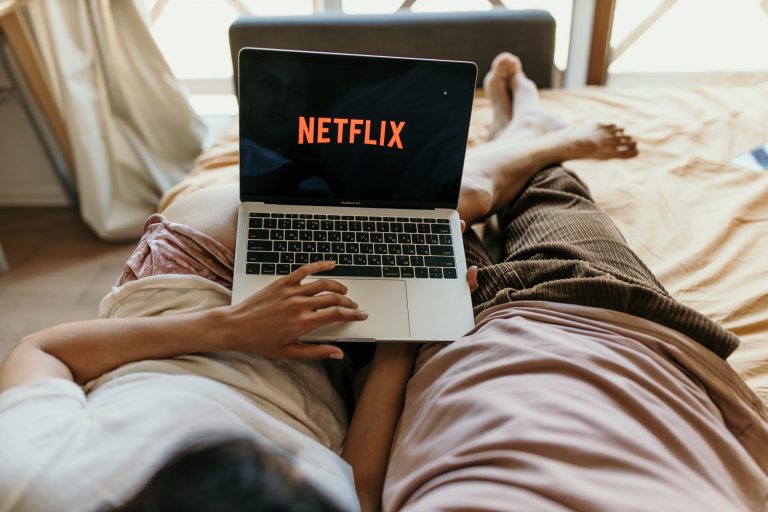When you think about the future, you probably imagine a world where technology makes everything cheaper and more efficient. But despite all the advancements, some things stubbornly refuse to drop in price. You might have expected these everyday items and services to become more affordable over time, yet they remain frustratingly expensive. Here’s a fresh look at 13 things you probably thought would get cheaper—but didn’t.
1. Health Insurance

Health insurance is one of those areas where you might have expected some relief. With advances in medical technology and an emphasis on preventive care, you’d think costs would go down. However, the reality is quite different. Premiums continue to rise, and many people find themselves paying more for less coverage. A report from the Kaiser Family Foundation highlights that the average family premium rose by 4% in 2021 alone, defying the hopeful expectations of policyholders.
Why is health insurance so stubbornly expensive? One reason is the rising cost of medical care itself, which seems to outpace inflation every year. Additionally, administrative costs and the complexity of insurance plans contribute to the price tag. The system is tangled in a web of inefficiencies that keep costs high. Until these underlying issues are addressed, don’t expect your premiums to decrease anytime soon.
2. Higher Education

With the rise of online learning platforms, it seemed logical that college tuition would become more affordable. Yet, the reality is that higher education costs continue to climb. Despite the availability of online courses and educational resources, tuition fees at traditional universities keep increasing. Scholarships and financial aid can help, but they don’t cover the skyrocketing costs completely. Many students and families are still left with staggering amounts of debt after graduation.
So why hasn’t the influx of digital learning made college cheaper? Part of the problem is that universities have high fixed costs, including staffing, research facilities, and campus maintenance. Furthermore, the prestige associated with attending established institutions keeps demand—and prices—high. Until there’s a significant shift in how education is valued and delivered, don’t expect a meaningful drop in tuition fees.
3. Housing

We’ve all heard the phrase “housing bubble”—and many hoped that after it burst, housing prices would fall. But even after market corrections, affordable housing remains elusive for many. According to a study by the Urban Institute, rising land costs and regulatory hurdles have contributed to keeping prices high. Despite economic downturns and more people working remotely, the demand for housing in desirable areas has kept prices from falling.
Why does housing remain so costly? For one, there’s a shortage of available land in many urban areas. Additionally, construction costs have increased due to labor shortages and higher material prices. Regulations and zoning laws add another layer of complexity and cost. The result is a housing market that remains stubbornly expensive, making homeownership a difficult dream for many.
4. Childcare Services

You might think that with more people working from home, the demand for childcare would decrease, thereby lowering costs. However, this isn’t the case. Childcare services have remained costly, and in some areas, prices have even increased. The need for quality, reliable childcare is as strong as ever, and providers face rising operational costs. This keeps prices stubbornly high, much to the frustration of parents everywhere.
Why are these services still so expensive? One reason is the labor-intensive nature of childcare, which requires qualified staff to maintain proper child-to-caretaker ratios. Additionally, the pandemic has added costs related to health and safety measures. Many facilities also deal with high rent, as they are often located in densely populated areas. Until these underlying cost drivers are addressed, don’t expect to see a drop in childcare expenses.
5. Organic Food

It seems everyone is jumping on the organic bandwagon, so shouldn’t prices go down with increased demand and production? Unfortunately, that’s not how it has played out. Despite growing interest and production, organic foods remain costly. The organic farming process is more labor-intensive, and yields are typically lower than conventional methods. According to the Organic Trade Association, these factors contribute to the higher prices.
Why is organic food so pricey despite its popularity? For starters, obtaining organic certification involves stringent regulations and compliance costs. Farmers face higher risks due to the lack of synthetic pesticides and fertilizers, which can lead to increased losses. Additionally, organic farming often requires more manual labor, adding to operational costs. Until these challenges are mitigated, don’t hold your breath for cheaper organic produce.
6. Public Transportation

Public transportation was once seen as a budget-friendly alternative to owning a car. However, the cost of using buses, trains, and subways has steadily increased over the years. Despite investments in infrastructure, fares have not become more affordable. Rising operational costs, maintenance, and the need for technology upgrades all contribute to the high price of public transit. For those who rely on these services, the promise of affordable commuting remains unfulfilled.
Why haven’t public transportation costs decreased? One major issue is funding shortfalls, as fare collections alone are insufficient to cover expenses. In addition, the pandemic has led to decreased ridership, further exacerbating the financial strain on transit systems. Upgrades and expansions, although necessary, also add to the overall cost. Until sustainable funding models are in place, public transportation is likely to remain a costly affair.
7. Concert Tickets

Remember when attending a concert didn’t require taking out a second mortgage? Those days seem to be long gone. Even with the rise of virtual events, the cost of seeing your favorite artists live hasn’t diminished. Live Nation Entertainment’s 2022 report shows that ticket prices have continued to climb, driven by high demand and limited seating. Despite technological advancements, the traditional concert experience remains a premium event.
Why are concert tickets still so high? For one, artists and production companies face increased costs for staging elaborate shows. There’s also the issue of secondary markets, where tickets are resold at inflated prices. Additionally, exclusive experiences and VIP packages have raised the bar—and the cost—for attending live events. Until these dynamics change, attending a concert will continue to be a pricey endeavor.
8. Internet Services

In the age of the internet, it’s surprising that the cost of connectivity hasn’t decreased. Many people expected that with increased competition among providers, prices would fall. Yet, in reality, internet service costs remain stubbornly high. Part of the issue is the lack of competition in many areas, where a few providers dominate the market. This monopolistic setup keeps prices from dropping and limits consumer choices.
Why haven’t internet services become cheaper? Building and maintaining infrastructure is expensive, and providers pass these costs on to consumers. Moreover, as people demand faster speeds and more data, companies can justify charging premium prices. Regulatory constraints and technological bottlenecks also play a role. Until these underlying issues are resolved, don’t expect a significant drop in your internet bill.
9. Designer Fashion

You might have thought that with the rise of fast fashion and online shopping, luxury clothing would become more accessible. However, designer fashion remains as expensive as ever. Despite new retail platforms and discount sites, the allure of high-end fashion keeps prices elevated. Brands maintain their exclusivity by limiting production and controlling the retail environment. This keeps demand high and prices even higher.
Why do designer clothes still cost a fortune? The craftsmanship and quality materials used in high fashion don’t come cheap. Additionally, marketing and brand reputation play significant roles in maintaining price points. Consumers pay a premium not just for the item but for the status and prestige associated with the brand. Until the fashion world undergoes a radical change, don’t expect luxury items to become more affordable.
10. Gym Memberships

With the explosion of home fitness apps and equipment, you might think gym memberships would become more competitive. Yet, joining a gym remains a costly endeavor for many. Despite the availability of numerous fitness options, traditional gym memberships have not seen significant price drops. The convenience and social aspect of gyms keep people signing up, even at high rates. This has allowed them to maintain pricing structures.
Why haven’t gyms slashed their fees? For one, the overhead costs of running a gym, including rent, staff salaries, and maintenance, are substantial. In addition, many people are willing to pay for the specialized equipment and classes that gyms offer. Even during economic downturns, fitness remains a priority for many, keeping demand and prices high. Until these business models change, expect to pay a premium for gym access.
11. Streaming Services

Remember when cutting the cord was supposed to save you money? As more streaming platforms enter the market, you’d think prices would go down. However, the cost of accessing all your favorite shows and movies adds up quickly. Each service offers unique content that tempts you into subscribing to multiple platforms. This has ironically led to a situation where people are paying as much, if not more, than they did for cable.
Why is streaming still expensive? For starters, the cost of producing original content has skyrocketed as platforms compete for exclusive rights. Additionally, licensing deals and technological infrastructure add to operational costs. As long as viewers demand diverse and high-quality content, prices are unlikely to fall. Until the industry undergoes consolidation or regulation, expect your streaming bills to remain high.
12. Airline Tickets

When lower fuel prices became a reality, many hoped airfare would become more affordable too. However, ticket prices have remained high, with only occasional dips. Even after the industry’s recovery from the pandemic, airlines have not significantly reduced fares. Increased operational costs, such as labor and maintenance, continue to impact ticket pricing. This leaves travelers wondering when—or if—they’ll ever see cheaper flights.
Why haven’t airlines slashed prices? Fuel isn’t the only expense airlines face; labor costs, airport fees, and maintenance are substantial as well. Additionally, fluctuating demand and capacity constraints affect pricing strategies. As airlines focus on maximizing profits, they employ dynamic pricing models that keep fares elevated. Unless there’s a significant industry overhaul, don’t expect substantial savings on your next flight.
13. Home Appliances

With advances in technology, you might expect home appliances to become more affordable. Yet, many people find themselves spending more on items like refrigerators, washers, and ovens. Innovations such as smart technology and energy efficiency add to the cost, making these appliances pricier. Even with increased competition among manufacturers, prices haven’t dropped as much as anticipated. People looking to upgrade their homes are often surprised by the sticker shock.
Why do home appliances remain expensive? The development and implementation of new features require significant investment from manufacturers. Moreover, supply chain disruptions and material shortages have further inflated prices. As consumers demand smarter and more efficient products, companies capitalize on these trends to maintain higher price points. Until these market factors change, expect to pay a premium for modern home appliances.
This article is for informational purposes only and should not be construed as financial advice. Consult a financial professional before making investment or other financial decisions. The author and publisher make no warranties of any kind.








